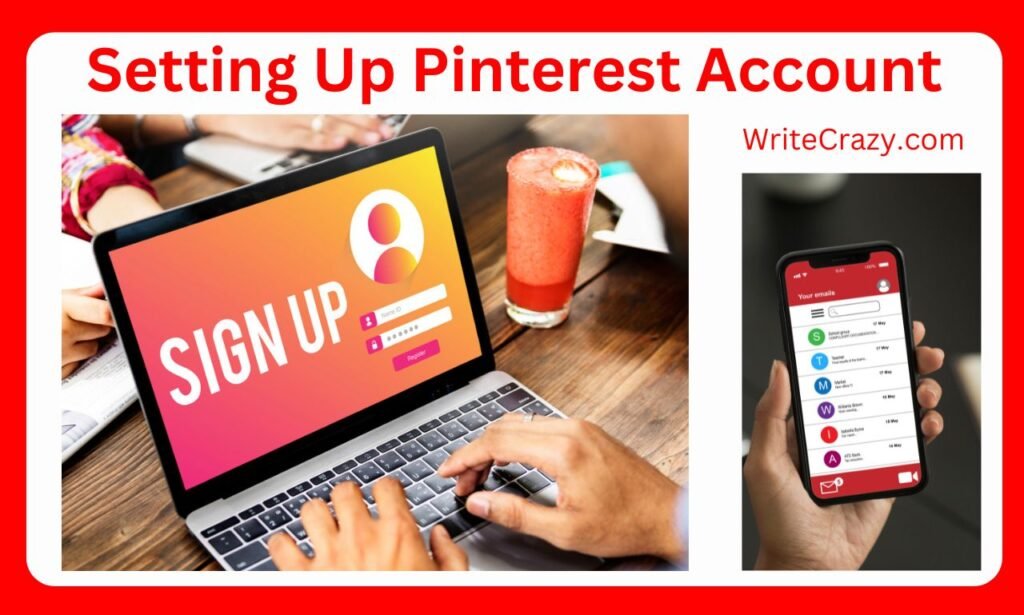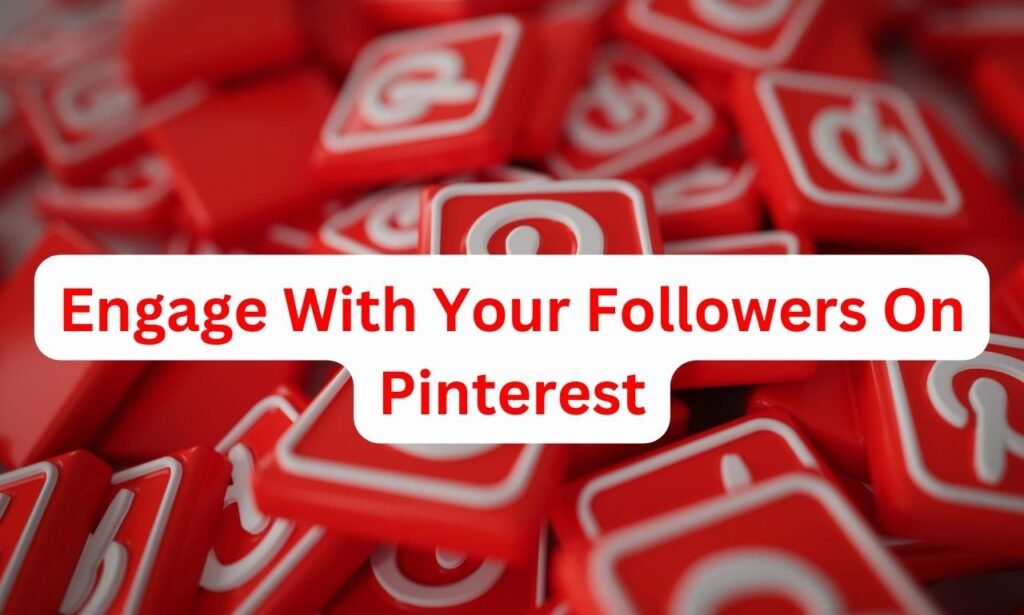If you don’t know how to use Pinterest for blogging, this article is for you. Pinterest for blogging offers a visual discovery platform with 430M active users. Bloggers can use Pinterest’s platform to develop their following, improve their online exposure, and generate visitors to their website.
Because of its special qualities, Pinterest is the perfect platform for bloggers. Because of its visual-centric design, users can easily share and find new ideas by creating boards and pinning images and videos that highlight their content.
Additionally, Pinterest’s algorithm favors high-quality content, ensuring that more people see intriguing and pertinent pins. Let’s start this exploration and understand how to use Pinterest for blogging.
What Is Pinterest?
Pinterest is a social media site that focuses on finding inspiration and making discoveries visually. To gather and arrange ideas, links, and photos from the internet, users can make virtual pinboards. People can gather and exchange content on anything from fashion and home decor to recipes and travel, using it as a digital scrapbook.
Pinterest’s primary function is that of a visual search engine, letting users browse through well-chosen photos and links to get ideas and inspiration. People looking for ideas for a variety of hobbies and projects enjoy its artistically focused experience that emphasizes originality and beauty. It has become the go-to resource for searching for new products, trends, and content because of its user-friendly interface and emphasis on content.
Benefits of Using Pinterest For Blogging:
Use Pinterest’s powerful images and thoughtful interaction to increase the visibility of your blog posts and expand your readership. Here are a few benefits you can avail while using Pinterest for blogging.
- Use visually appealing pins to increase blog visitors.
- Reach a wider audience with your blog.
- Boost interaction by posting blog entries on an inspiration-focused site.
- Build authority in your niche by selecting discussion boards around the subjects of your blogs.
- Establish connections with like-minded people and grow a vibrant online community.
- Make use of Pinterest’s visual search engine powers to draw visitors who are drawn to your material.
How To Use Pinterest For Blogging:

All the steps of how to use Pinterest for blogging are described below.
Set Up Your Pinterest Profile for blogging
To begin using Pinterest for blogging, you must first create an optimized profile. Start by choosing a polished and eye-catching profile image, writing an engaging bio that highlights your area of expertise, and adding a direct link to your blog. This initial crucial step establishes the basis for building followers and increasing credibility.
Establish a New Company Account:
Go check out Pinterest.com.
– Select “Sign up” by clicking in the upper-right corner.
– Enter your age, set a password, and enter your email address.
– Click “Create account” to continue
Create a Board About Your Blog:
To create a business Pinterest board, sign up or log in, switch to a business account, and create a new board with a descriptive name and category. Choose privacy settings, add pins from Pinterest or your website, and organize them logically. Optimize pin descriptions with keywords and hashtags for visibility. Promote the board on social media and engage with your audience. Monitor performance with Pinterest Analytics to refine your strategy.
Write Attention Grabbing Pin
Writing a Pinterest pin that captures readers’ attention requires attention-grabbing language and eye-catching visuals. Create a compelling headline that draws attention to the value or advantage of the pin first. To increase searchability, carefully consider your keyword use.
Keep descriptions succinct but educational to pique readers’ interest and promote clicks. To encourage interaction, provide a call-to-action such as “Shop Now” or “Learn More.” Lastly, make use of excellent, pertinent photos or videos that grab attention in users’ feeds.
Add Eye-Catching Images
Use high-quality photographs that are clear, bright, and pertinent to your content to add visually appealing elements to your Pinterest pins. To draw attention, use strong contrasts and vibrant colors. Select pictures that have clear, straightforward compositions that are simple to interpret at a glance.
To get the best possible presentation on Pinterest for blogging, make sure your photographs are scaled correctly and positioned properly. To stand out in users’ feeds, try exploring various formats, styles, and textures.
Create Related Boards
Make relevant boards on Pinterest to help you arrange information and draw in followers with a wide range of interests. Select board names that correspond with particular themes or subjects in your area of expertise. Assemble pins that correspond with the topic of each board to make sure it is cohesive and relevant.
To improve discoverability, use pertinent keywords and detailed board descriptions. Connect relevant boards to encourage interaction and discovery. Maintain consistent pin quality and style across all boards to strengthen your brand identity.
Create a Staff Board:
To promote a sense of community and highlight your team, create a Staff Board on Pinterest for blogging. Try titling it “Meet Our Team” or “Our Awesome Staff.” Include individual pins with each team member’s picture, job, and succinct bio.
Members of the team should be encouraged to add interesting information or hobbies to their pins. Update the board on any staff changes or recruits. By doing this, you may humanize your brand, increase its relatability, and foster audience trust.
Make Your Blog Pin-able:
Add Pinterest-optimized photos with a vertical orientation, attention-grabbing headlines, and clear visuals to your blog content to make it pin-able. Every blog post should have a “Pin It” button to make sharing to Pinterest simple. Give photo captions that are Pinterest-friendly and contain pertinent keywords.
Provide a call-to-action or mention it in the post to entice people to pin your material. By turning on rich pins and having your website validated by Pinterest, you can make sure it is Pinterest-friendly. This makes your blog more visible and attracts more visitors.
Engage With Your Followers:

Interact with your Pinterest followers by leaving comments, loving and repining their images, and returning the favor. Express gratitude for their participation and suggestions. Make surveys or pose inquiries to entice involvement. On your boards, highlight user-generated content to build a feeling of community.
Stay in touch with your audience by participating in pertinent conversations or emerging subjects regularly. Developing these connections raises brand awareness, strengthens customer loyalty, and improves traffic to your website and merchandise.
Post Consistently
To keep your audience interested and visible, post frequently on Pinterest. Create a content calendar to help you plan out pins regularly and maintain a constant supply of new information.
Strive for a harmonious blend of your original material and audience-relevant pins. To strengthen brand identification, maintain consistency in your brand voice, style, and messaging. Consistent publishing enhances algorithm visibility, keeps your profile lively, and expands your audience engagement and growth prospects.
Conclusion: How To Use Pinterest For Blogging
In conclusion, learning how to use Pinterest for blogging offers numerous benefits to you as a content writer. Making interesting boards, eye-catching pins, and encouraging deep connections with your audience are all essential components of using Pinterest for blogging. You may increase visibility and increase traffic to your website or products by selecting material that complements your brand identity, optimizing for search engines, and sticking to a regular posting schedule.
Furthermore, by interacting with followers and presenting your staff, you personalize your brand and foster loyalty and trust. Pinterest can be a useful tool for community development and business expansion with careful preparation and active engagement.
FAQs: How To Use Pinterest For Blogging
How can I sign up for a Pinterest business account?
You can register for a business account on Pinterest or transfer your current personal account to a business account. Just visit Pinterest’s business page and adhere to the guidelines.
How do I activate Rich Pins and what are they?
Rich Pins offers more information right on the Pin, such as product specifications, recipe ideas, or facts about specific articles. After your website has been verified on Pinterest, you can activate Rich Pins.
How do I assess my Pins’ performance?
You can monitor the performance of your Pins with Pinterest Analytics, including impressions, clicks, saves, and more. Using your Pinterest business account, access Analytics.
Which kinds of material are most successful on Pinterest?
Pinterest works best with visual material, such as crisp photos and videos. User-friendly material includes product showcases, DIY projects, tips, and inspirational articles.
How do I get more people to interact with my Pinterest account?
Interact with your audience by leaving thoughtful comments, re-pinning articles, and following pertinent users. Engagement is also boosted by regularly publishing worthwhile and original material.
Is it possible for me to promote on Pinterest?
Sure, businesses may advertise on Pinterest with Promoted Pins, which show up in users’ feeds and search results. The Pinterest advertising Manager allows you to create and manage advertising.

